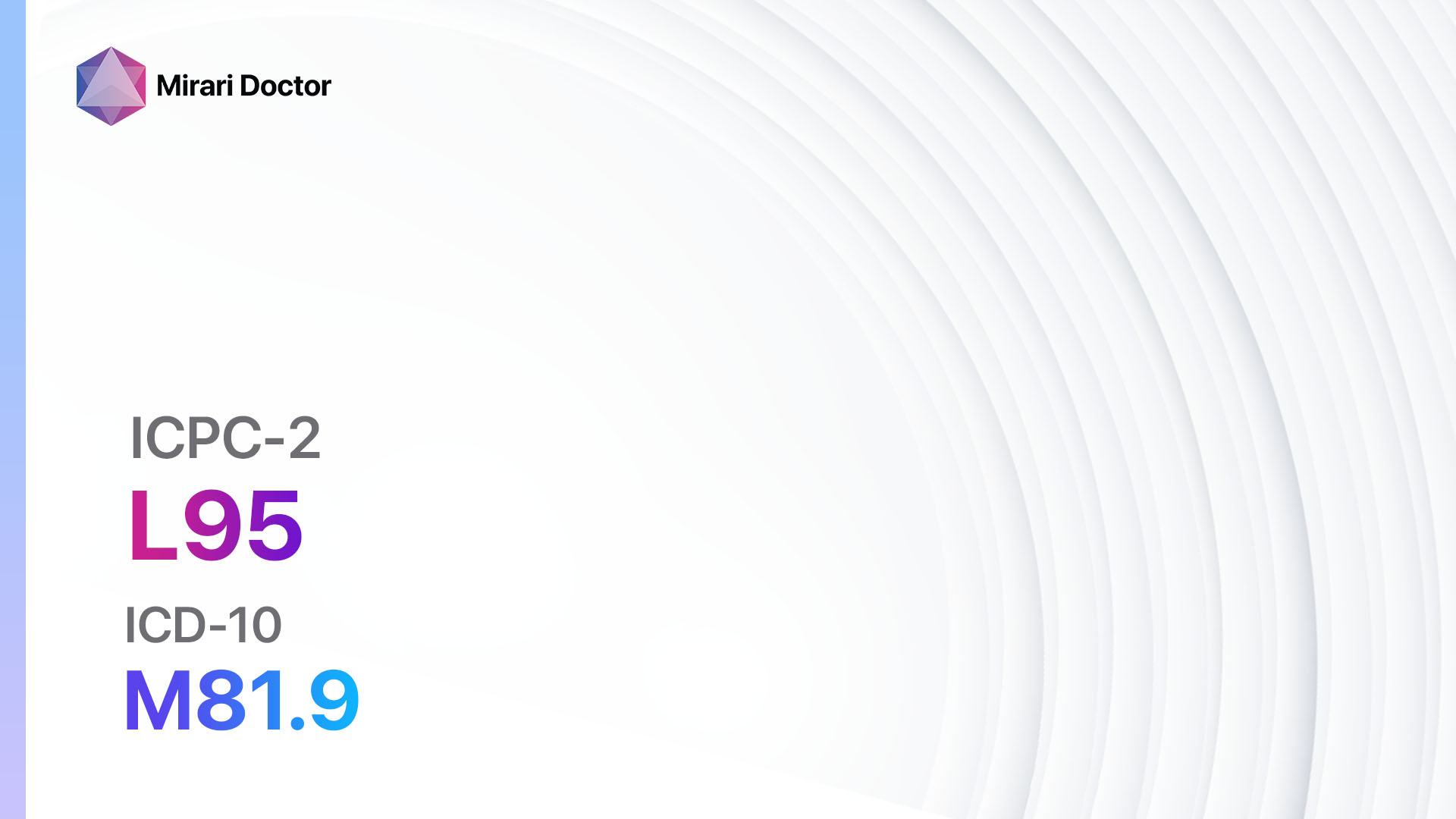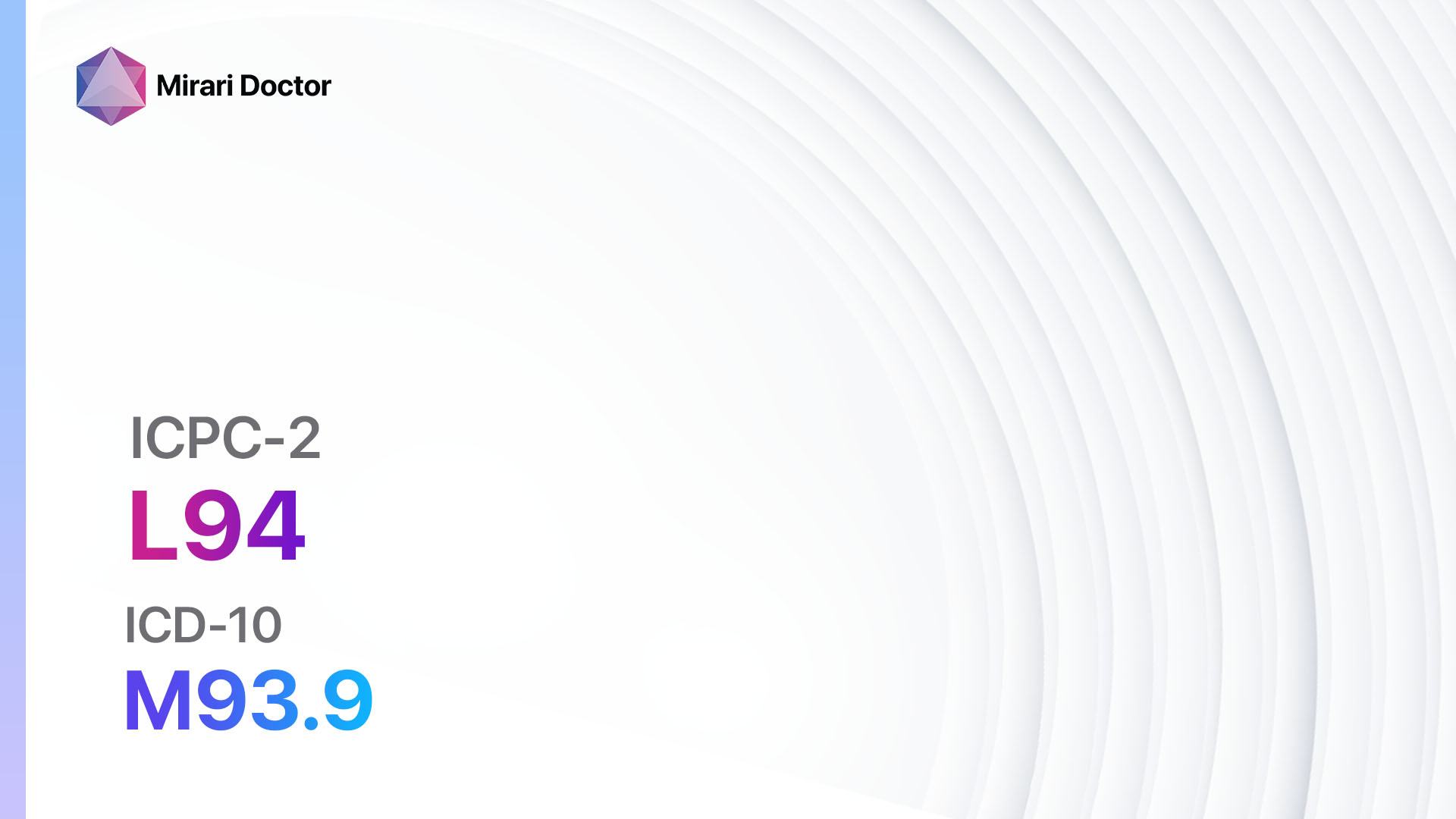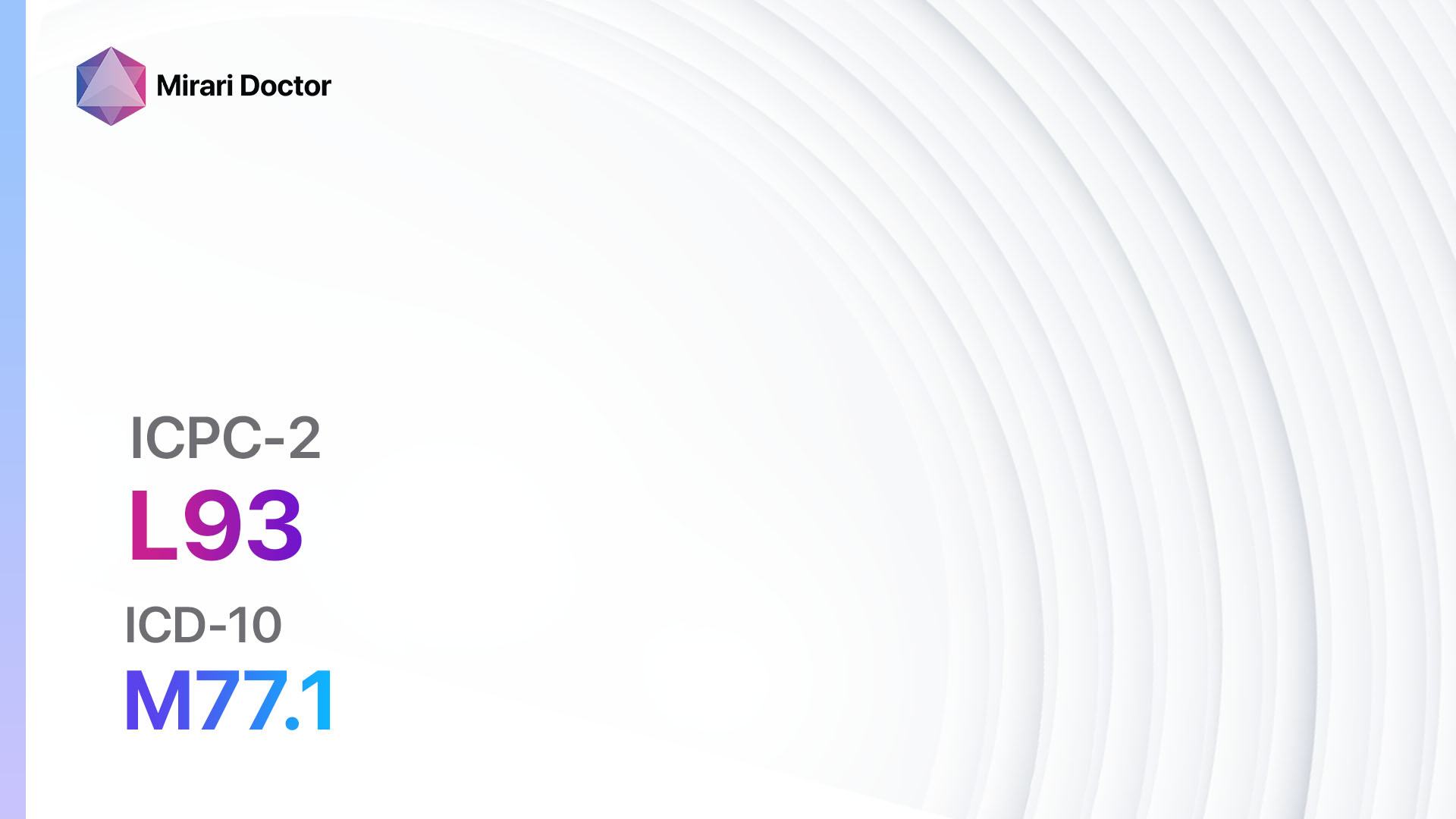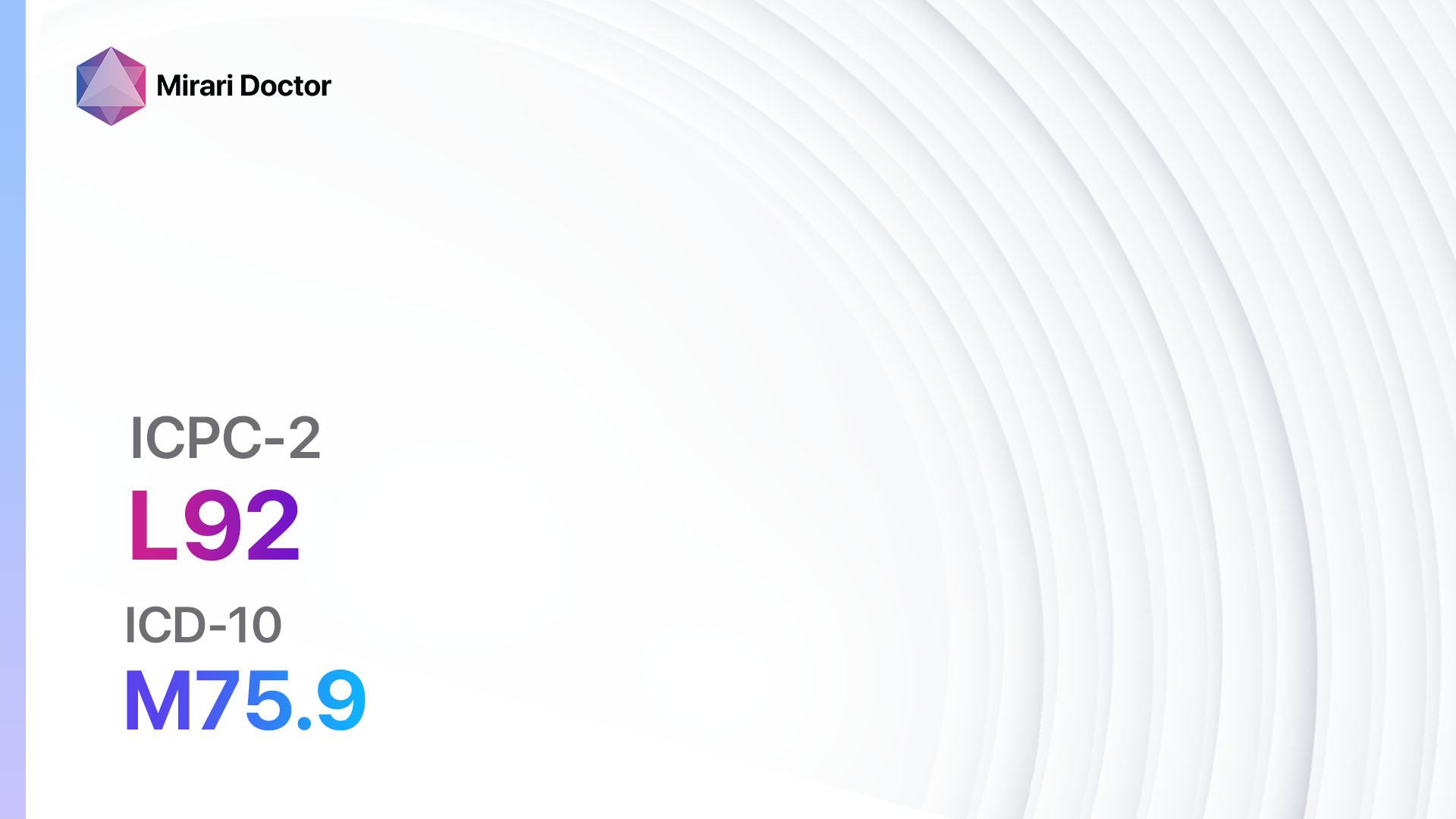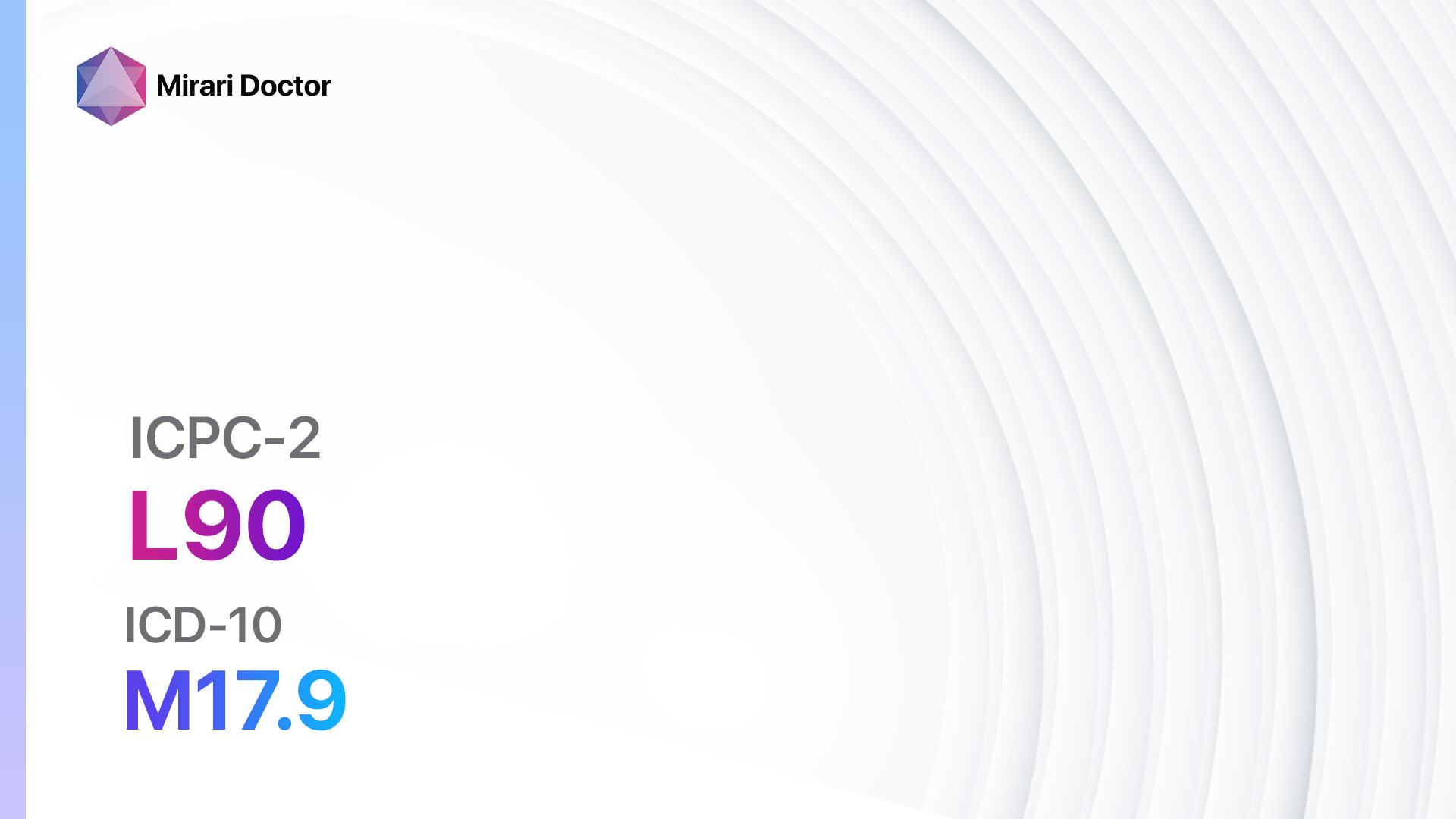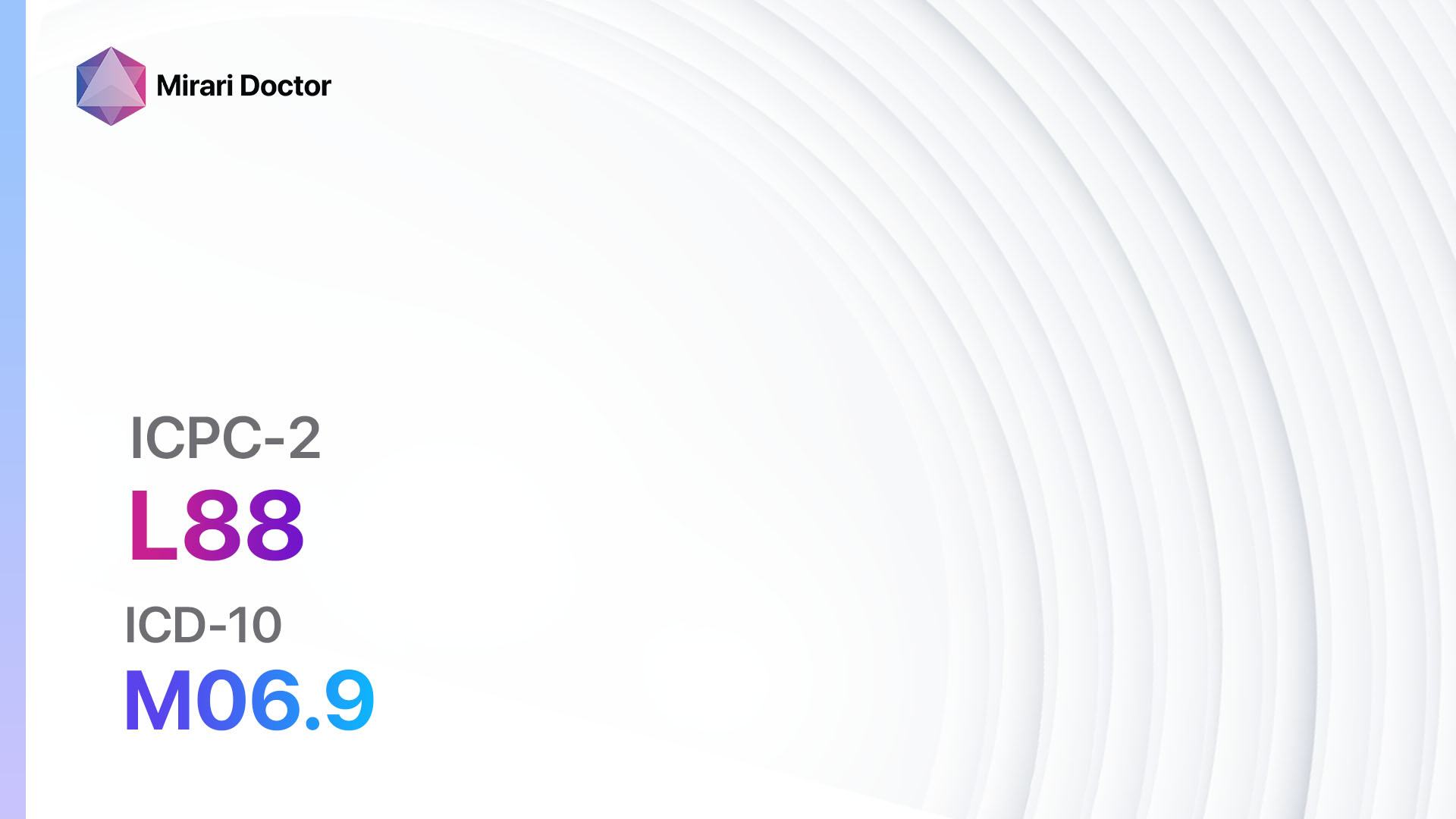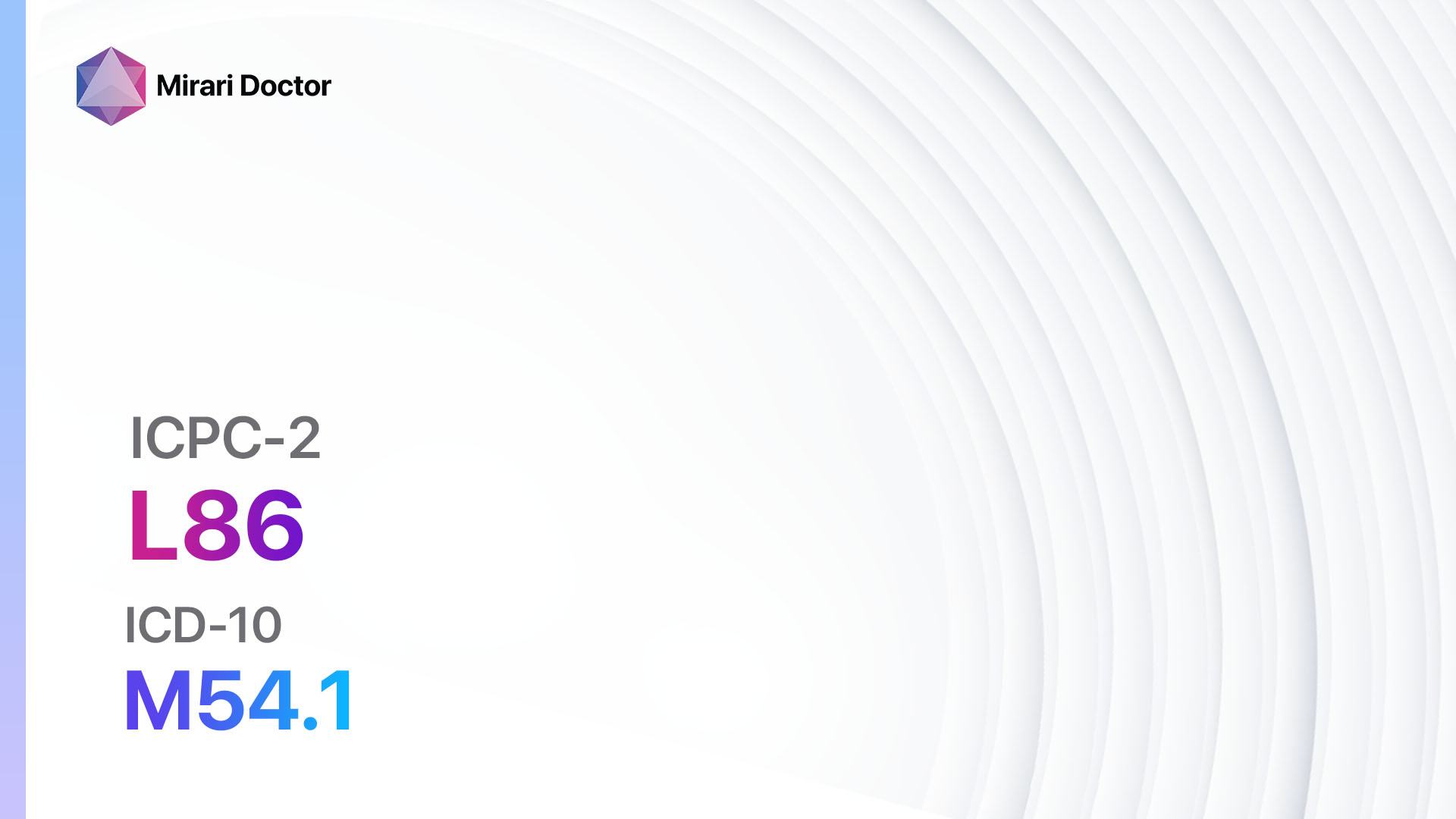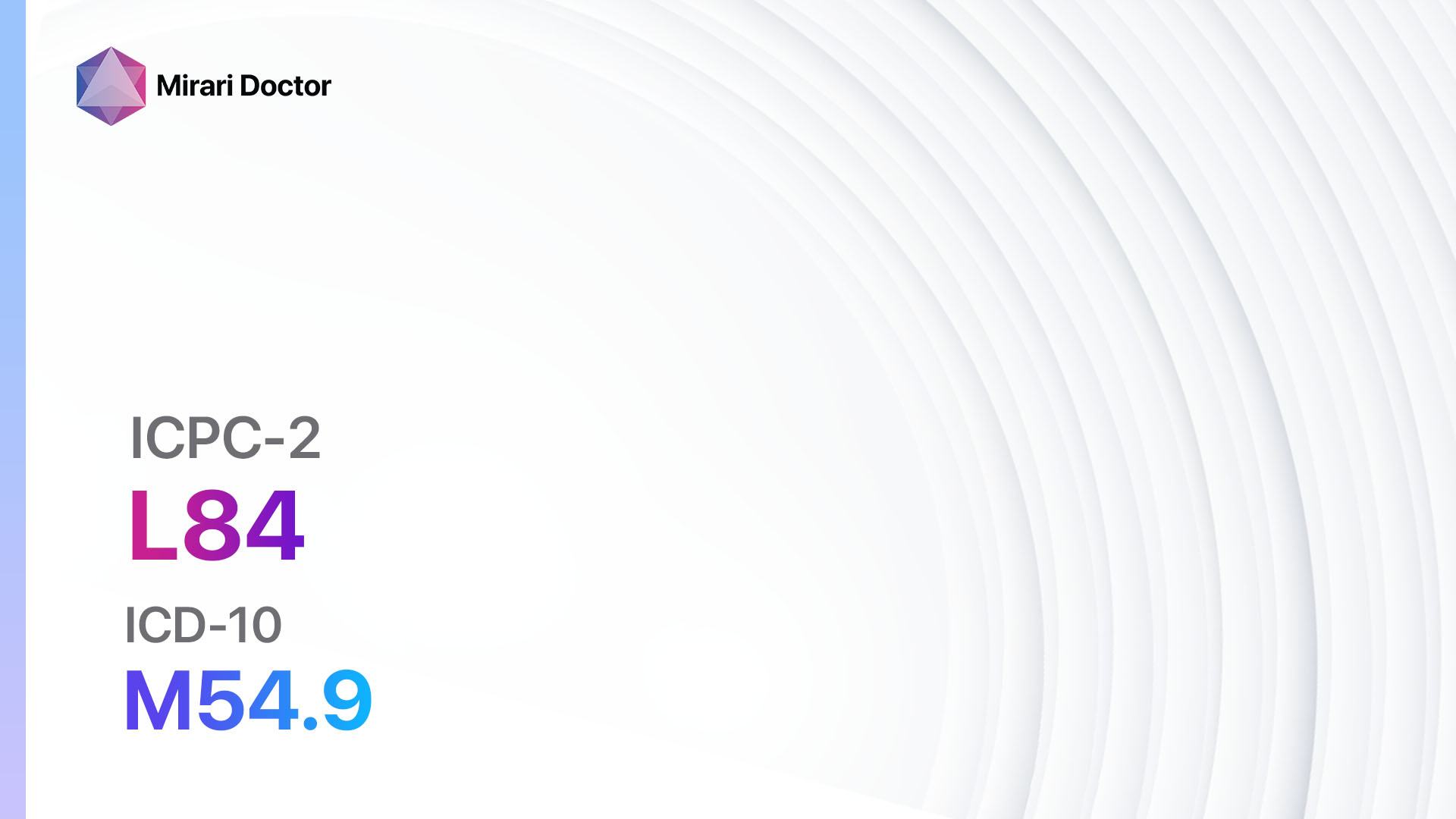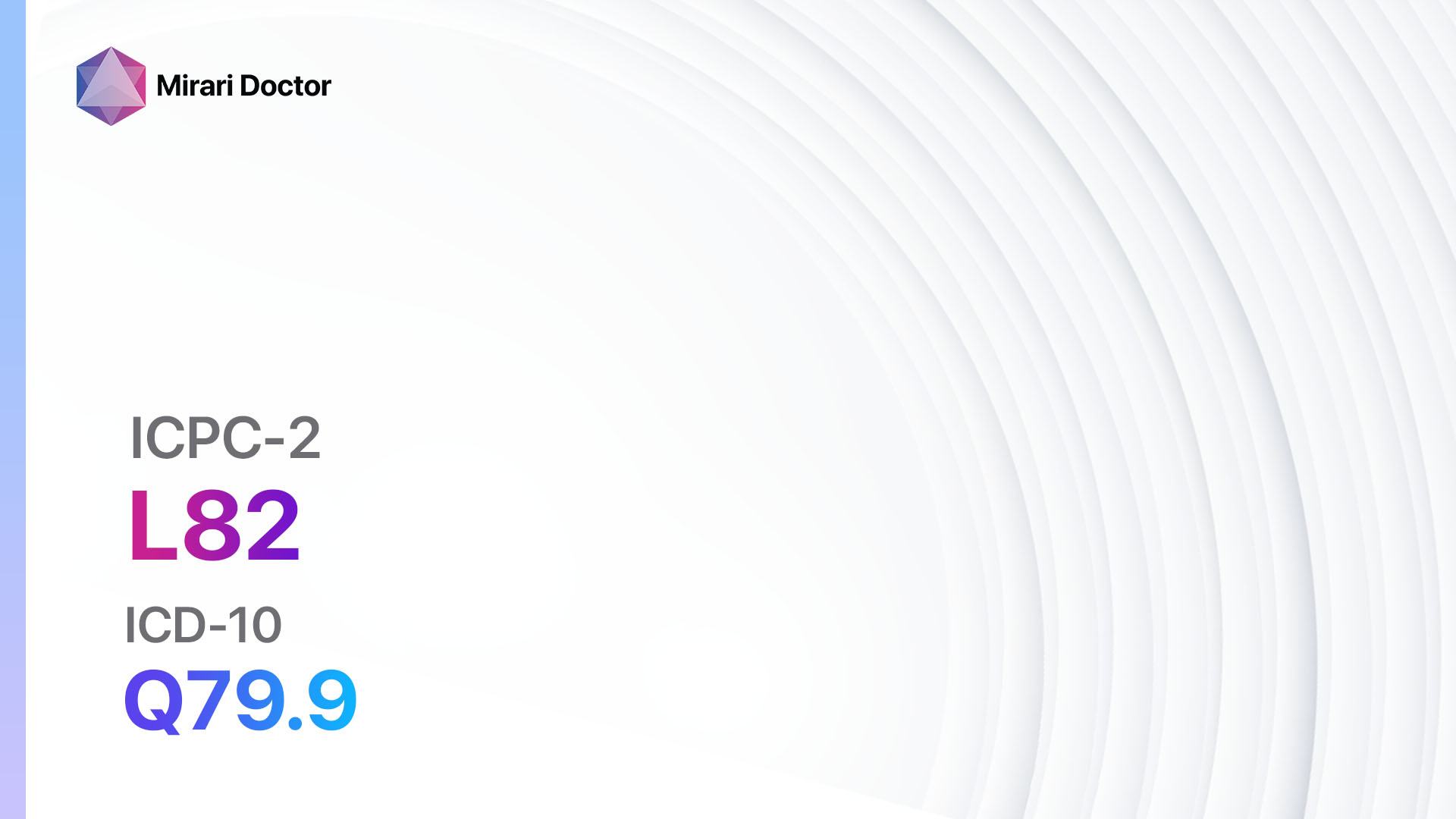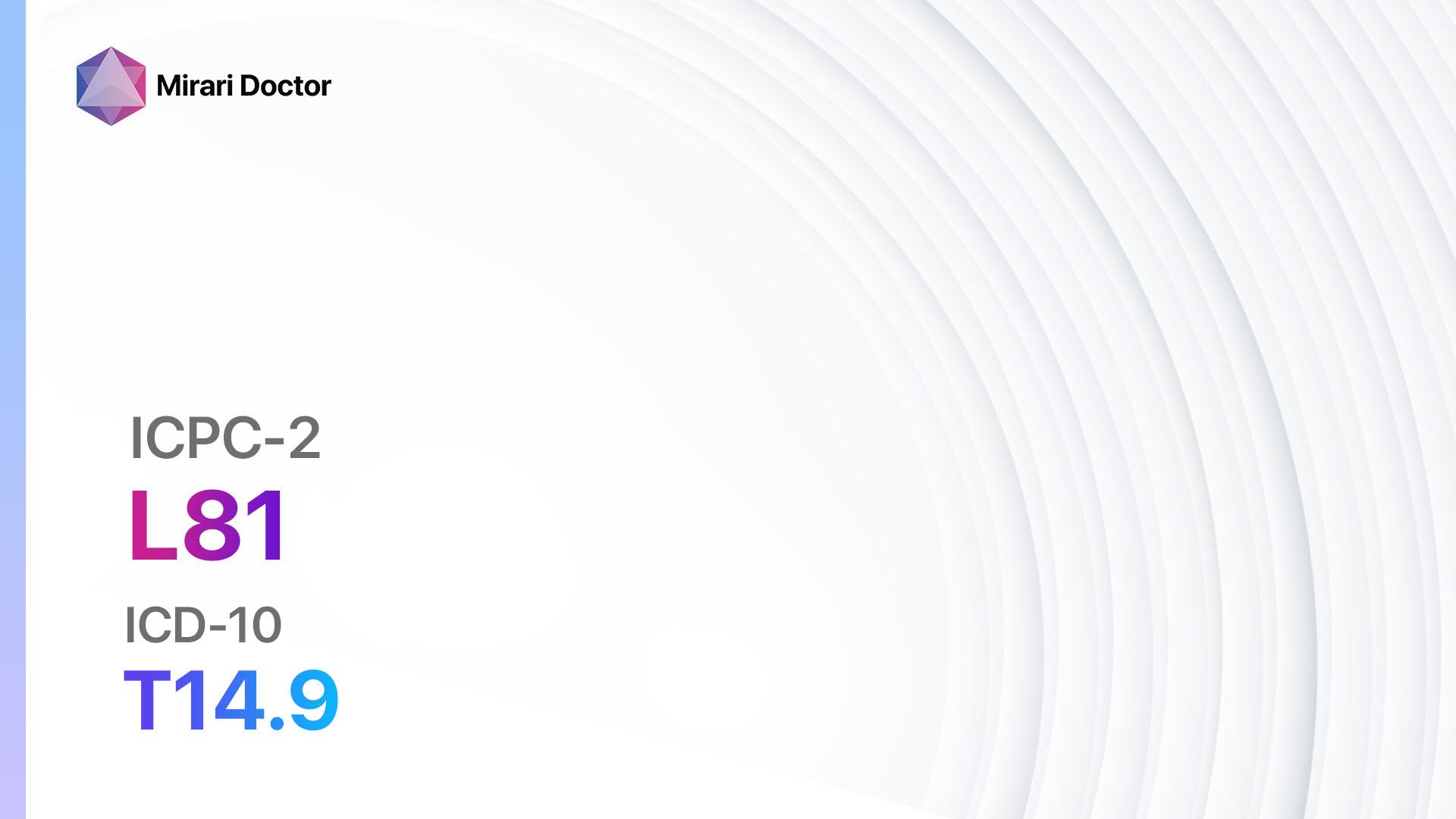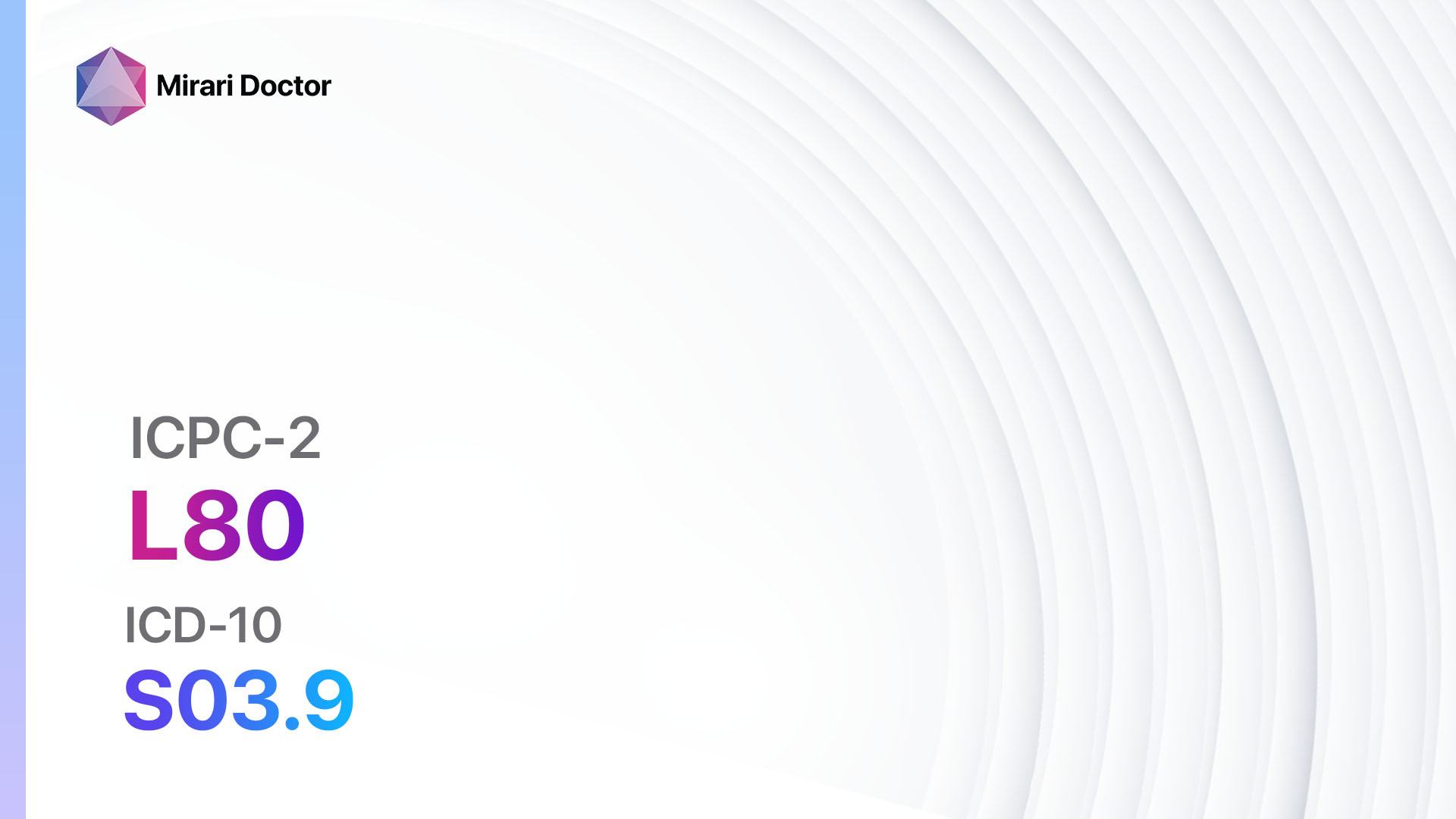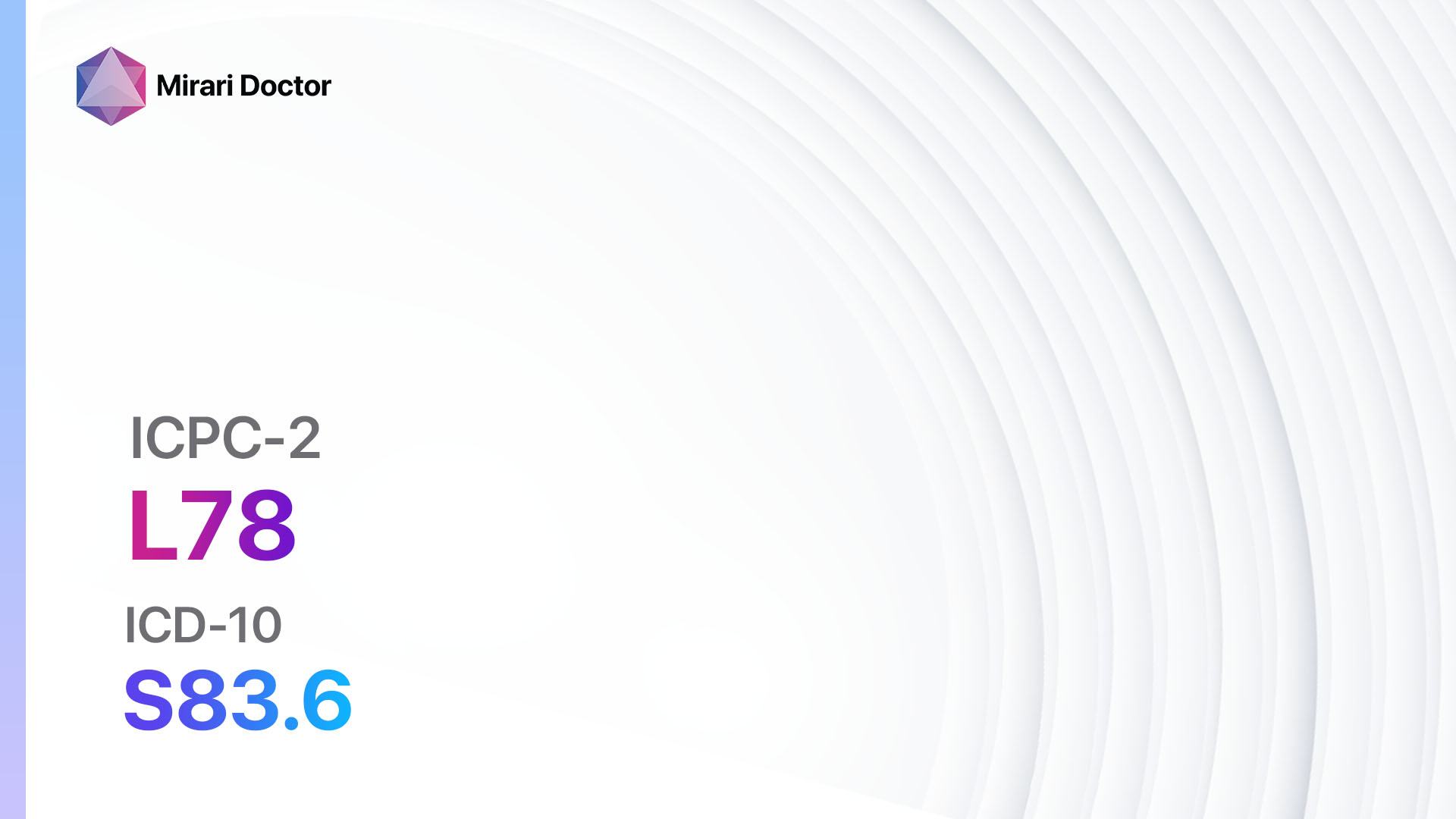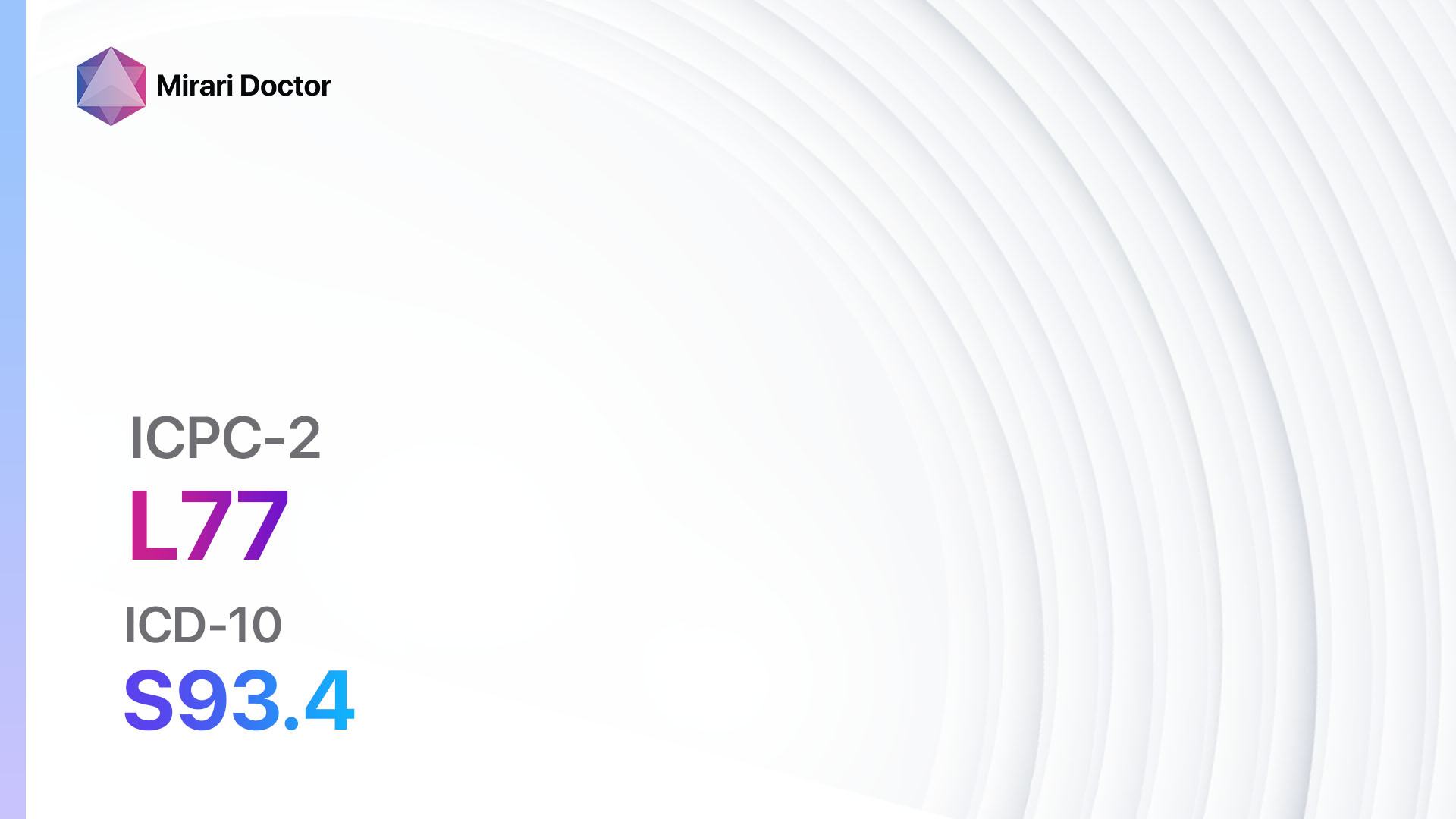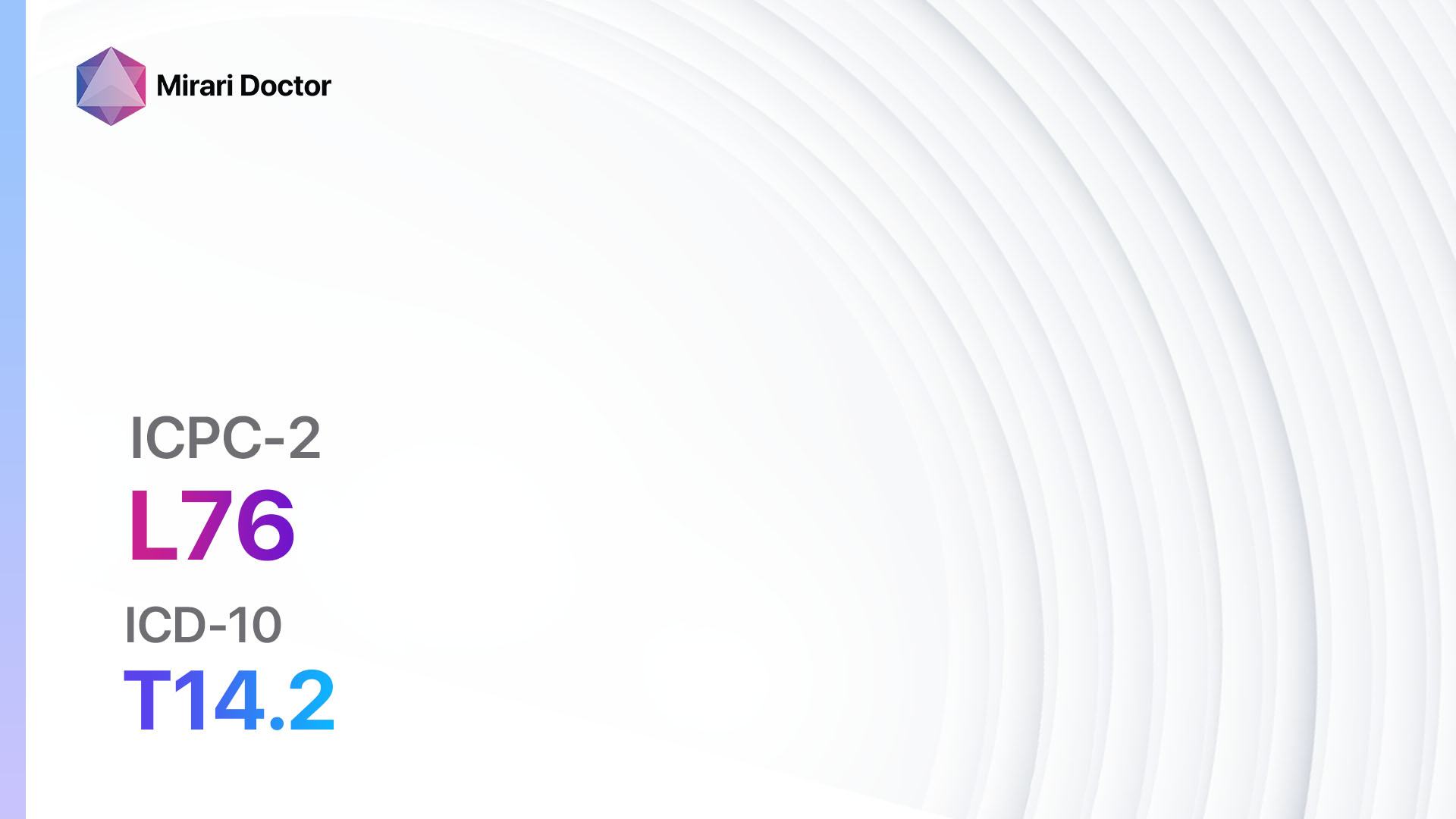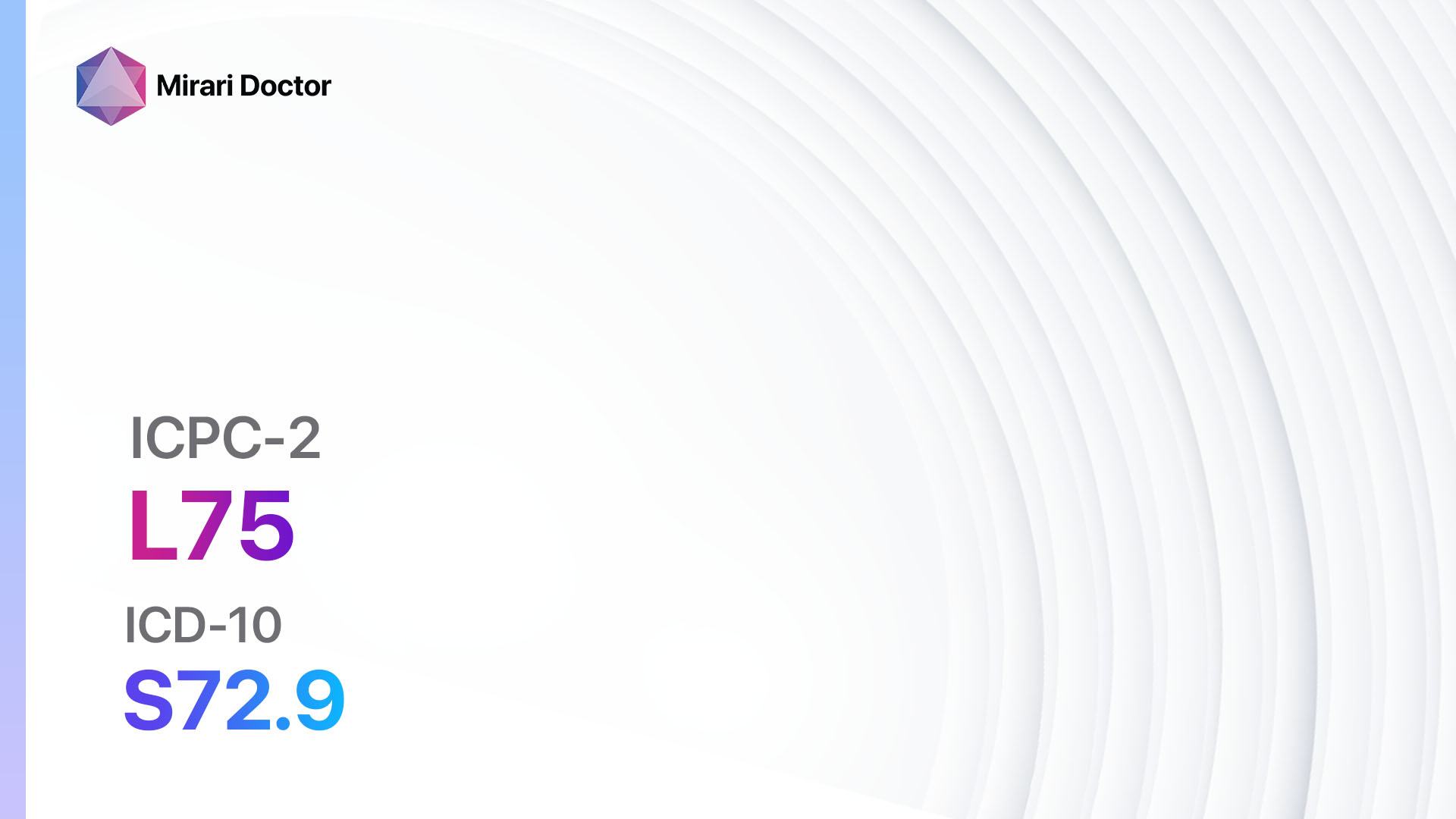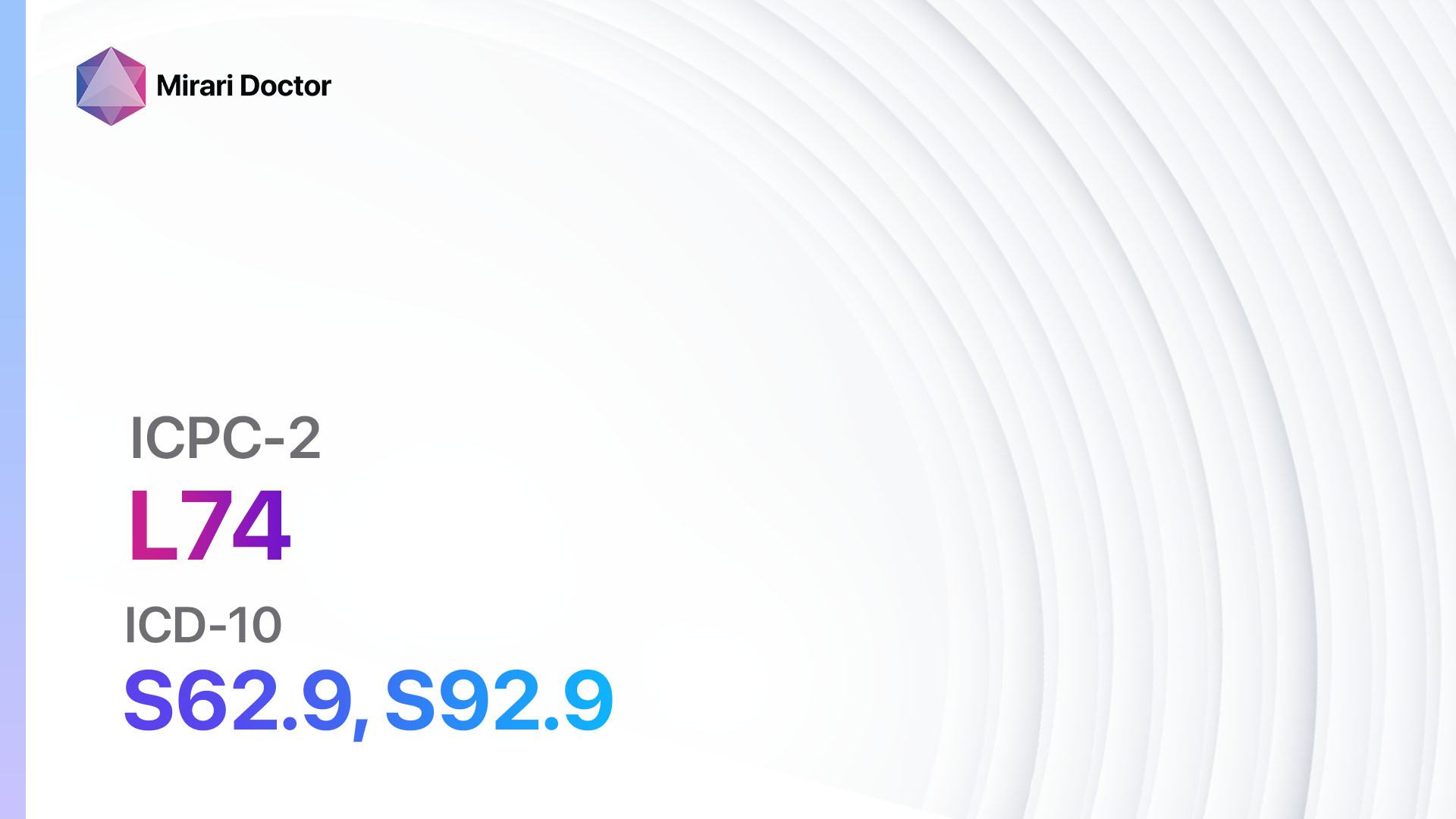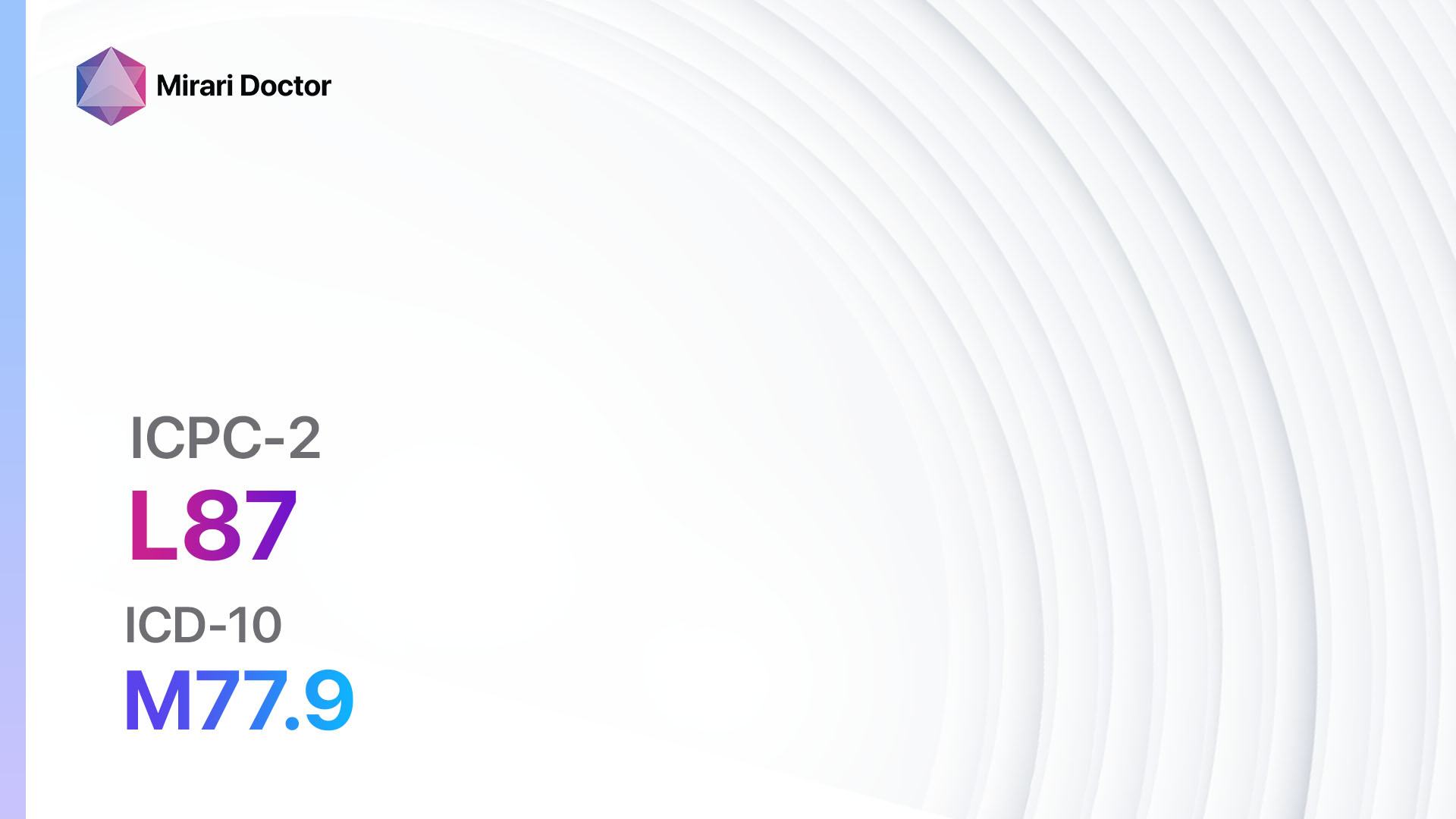
Introduction
Bursitis, tendinitis, and synovitis are inflammatory conditions that affect the soft tissues surrounding joints. They can cause pain, swelling, and limited range of motion[1][2]. The aim of this guide is to provide an overview of the symptoms, causes, diagnostic steps, possible interventions, and lifestyle modifications for bursitis, tendinitis, and synovitis NOS (Not Otherwise Specified).
Codes
- ICPC-2 Code: L87 Bursitis/tendinitis/synovitis NOS[3]
- ICD-10 Code: M77.9 Enthesopathy, unspecified[4]
Symptoms
- Joint pain: Pain in the affected joint, which may worsen with movement or pressure[1][5].
- Swelling: Swelling around the joint, which may be accompanied by redness and warmth[2][6].
- Limited range of motion: Difficulty moving the joint fully[1][7]. Stiffness: Joint stiffness, especially after periods of inactivity[5][8].
- Weakness: Weakness in the affected area, making it difficult to perform certain movements[7][9].
Causes
- Overuse or repetitive motion: Repeatedly using a joint or performing the same motion can lead to inflammation of the surrounding tissues[1][6].
- Injury or trauma: Direct injury or trauma to a joint can cause inflammation[2][5].
- Infection: In rare cases, an infection can lead to bursitis, tendinitis, or synovitis[6][8].
- Rheumatoid arthritis: An autoimmune condition that can cause inflammation of the joints and surrounding tissues[7][9].
- Gout: A form of arthritis caused by the buildup of uric acid crystals in the joints[5][8].
- Other underlying medical conditions: Certain medical conditions, such as diabetes or thyroid disorders, can increase the risk of developing bursitis, tendinitis, or synovitis[6]
Diagnostic Steps
Medical History
- Gather information about the patient’s symptoms, including the location and duration of pain, any triggering factors, and any previous injuries or medical conditions[1][7].
- Ask about the patient’s occupation or hobbies, as certain activities may contribute to the development of bursitis, tendinitis, or synovitis[2][6].
- Inquire about any recent infections or illnesses that may be related to the symptoms[5][8].
Physical Examination
- Perform a thorough physical examination of the affected joint, looking for signs of swelling, redness, warmth, and tenderness[1][9].
- Assess the range of motion of the joint and any limitations or pain experienced during movement[2][7].
- Palpate the area around the joint to identify any specific points of tenderness or swelling[5][6].
Laboratory Tests
- Complete blood count (CBC): To check for signs of infection or inflammation[1][8].
- Erythrocyte sedimentation rate (ESR) or C-reactive protein (CRP): These tests can indicate the presence of inflammation in the body[2][9].
- Joint fluid analysis: If there is significant joint swelling, a sample of the fluid may be taken and analyzed for signs of infection or other abnormalities[5][7].
Diagnostic Imaging
- X-rays: Can help identify any structural abnormalities or signs of joint damage[1][6].
- Ultrasound: Useful for visualizing soft tissues, such as tendons and bursae, and can help identify any signs of inflammation or fluid accumulation[2][8].
- Magnetic resonance imaging (MRI): Provides detailed images of the joint and surrounding tissues, allowing for a more accurate diagnosis of bursitis, tendinitis, or synovitis[5]
Other Tests
- Electromyography (EMG): May be performed if there is suspicion of nerve involvement or muscle weakness[7][8].
- Arthroscopy: A minimally invasive procedure in which a small camera is inserted into the joint to visualize the structures and diagnose any abnormalities[6][9].
Follow-up and Patient Education
- Schedule a follow-up appointment to discuss the results of the diagnostic tests and determine the most appropriate treatment plan[1][5].
- Provide the patient with information about the condition, including its causes, treatment options, and strategies for managing symptoms[2][7].
- Educate the patient about the importance of rest, proper body mechanics, and avoiding activities that may exacerbate the condition[6][10].
Possible Interventions
Traditional Interventions
Medications:
Top 5 drugs for Bursitis/tendinitis/synovitis NOS:
- Nonsteroidal anti-inflammatory drugs (NSAIDs) (e.g., Ibuprofen, Naproxen):
- Cost: Generic versions can be $3-$20/month.
- Contraindications: History of gastrointestinal bleeding, kidney disease, or allergy to NSAIDs.
- Side effects: Upset stomach, heartburn, dizziness.
- Severe side effects: Stomach ulcers, kidney problems, allergic reactions.
- Drug interactions: Blood thinners, certain blood pressure medications.
- Warning: Prolonged use may increase the risk of cardiovascular events.
- Corticosteroids (e.g., Prednisone, Methylprednisolone):
- Cost: Generic versions can be $4-$30/month.
- Contraindications: Active infection, uncontrolled diabetes, or allergy to corticosteroids.
- Side effects: Increased appetite, weight gain, mood changes.
- Severe side effects: Osteoporosis, adrenal suppression, increased risk of infections.
- Drug interactions: Certain anticoagulants, antidiabetic medications.
- Warning: Long-term use may lead to dependency and withdrawal symptoms.
- Topical analgesics (e.g., Diclofenac gel, Capsaicin cream):
- Cost: Generic versions can be $10-$30/tube.
- Contraindications: Open wounds, broken skin, or allergy to topical analgesics.
- Side effects: Skin irritation, burning sensation.
- Severe side effects: Allergic reactions, severe skin irritation.
- Drug interactions: None reported.
- Warning: Wash hands thoroughly after applying and avoid contact with eyes or mucous membranes.
- Muscle relaxants (e.g., Cyclobenzaprine, Methocarbamol):
- Cost: Generic versions can be $4-$20/month.
- Contraindications: Glaucoma, urinary retention, or allergy to muscle relaxants.
- Side effects: Drowsiness, dizziness, dry mouth.
- Severe side effects: Severe allergic reactions, liver toxicity.
- Drug interactions: Sedatives, alcohol, certain antidepressants.
- Warning: May cause drowsiness, avoid driving or operating heavy machinery.
- Opioids (e.g., Oxycodone, Hydrocodone):
- Cost: Generic versions can be $10-$50/month.
- Contraindications: Respiratory depression, history of substance abuse, or allergy to opioids.
- Side effects: Constipation, drowsiness, nausea.
- Severe side effects: Respiratory depression, addiction, overdose.
- Drug interactions: Benzodiazepines, alcohol, certain antidepressants.
- Warning: Use with caution due to the risk of addiction and overdose.
Alternative Drugs:
- Acetaminophen: A non-NSAID pain reliever that can be used as an alternative for patients who cannot tolerate NSAIDs.
- Capsaicin patches: Topical patches that contain capsaicin, which can help relieve pain by desensitizing nerve receptors.
- Tramadol: An opioid-like medication that can be used as an alternative for patients who do not respond to other pain medications.
- Antidepressants: Certain antidepressants, such as amitriptyline or duloxetine, can help relieve chronic pain associated with bursitis, tendinitis, or synovitis.
- Anticonvulsants: Medications commonly used to treat seizures, such as gabapentin or pregabalin, can also help relieve nerve-related pain.
Surgical Procedures:
- Corticosteroid injections: Injections of corticosteroids directly into the affected joint or tendon can help reduce inflammation and relieve pain. Cost: $100-$500 per injection.
- Tenotomy: A surgical procedure in which the affected tendon is partially or completely cut to relieve tension and promote healing. Cost: $5,000-$10,000.
- Arthroscopy: A minimally invasive procedure in which a small camera is inserted into the joint to visualize and treat any abnormalities. Cost: $5,000-$10,000.
- Synovectomy: Surgical removal of the inflamed synovial tissue to reduce pain and improve joint function. Cost: $10,000-$20,000.
- Tendon repair: Surgical repair of a torn or damaged tendon to restore normal function. Cost: $5,000-$10,000.
Alternative Interventions
- Physical therapy: A structured exercise program designed to improve strength, flexibility, and range of motion. Cost: $50-$150 per session.
- Acupuncture: May help reduce pain and inflammation by stimulating specific points on the body. Cost: $60-$120 per session.
- Massage therapy: Manual manipulation of the soft tissues to promote relaxation and relieve muscle tension. Cost: $50-$100 per session.
- Chiropractic care: Manipulation of the spine and joints to improve alignment and reduce pain. Cost: $50-$200 per session.
- Herbal supplements: Some herbal supplements, such as turmeric or ginger, have anti-inflammatory properties and may help reduce pain. Cost: Varies depending on the specific supplement.
Lifestyle Interventions
- Rest and activity modification: Avoid activities that worsen symptoms and allow the affected area to rest and heal.
- Ice or heat therapy: Apply ice packs or warm compresses to the affected area to reduce pain and inflammation.
- Physical activity: Engage in low-impact exercises, such as swimming or cycling, to maintain joint mobility and strengthen the surrounding muscles.
- Weight management: Maintain a healthy weight to reduce stress on the joints and minimize symptoms.
- Proper ergonomics: Ensure proper posture and body mechanics during daily activities to prevent excessive strain on the joints.
- Assistive devices: Use braces, splints, or orthotics to support and protect the affected joint during activities.
- Stress management: Practice relaxation techniques, such as deep breathing or meditation, to reduce stress and promote overall well-being.
It is important to note that the cost ranges provided are approximate and may vary depending on the location and availability of the interventions.
Mirari Cold Plasma Alternative Intervention
Understanding Mirari Cold Plasma
- Safe and Non-Invasive Treatment: Mirari Cold Plasma is a safe and non-invasive treatment option for various skin conditions. It does not require incisions, minimizing the risk of scarring, bleeding, or tissue damage.
- Efficient Extraction of Foreign Bodies: Mirari Cold Plasma facilitates the removal of foreign bodies from the skin by degrading and dissociating organic matter, allowing easier access and extraction.
- Pain Reduction and Comfort: Mirari Cold Plasma has a local analgesic effect, providing pain relief during the treatment, making it more comfortable for the patient.
- Reduced Risk of Infection: Mirari Cold Plasma has antimicrobial properties, effectively killing bacteria and reducing the risk of infection.
- Accelerated Healing and Minimal Scarring: Mirari Cold Plasma stimulates wound healing and tissue regeneration, reducing healing time and minimizing the formation of scars.
Mirari Cold Plasma Prescription
Video instructions for using Mirari Cold Plasma Device – L87 Bursitis/tendinitis/synovitis NOS (ICD-10:M77.9)
| Mild | Moderate | Severe |
| Mode setting: 2 (Wound Healing) Location: 0 (Localized) Morning: 15 minutes, Evening: 15 minutes |
Mode setting: 2 (Wound Healing) Location: 0 (Localized) Morning: 30 minutes, Lunch: 30 minutes, Evening: 30 minutes |
Mode setting: 2 (Wound Healing) Location: 0 (Localized) Morning: 30 minutes, Lunch: 30 minutes, Evening: 30 minutes |
| Mode setting: 9 (Arthritis) Location: 0 (Localized) Morning: 15 minutes, Evening: 15 minutes |
Mode setting: 9 (Arthritis) Location: 0 (Localized) Morning: 30 minutes, Lunch: 30 minutes, Evening: 30 minutes |
Mode setting: 9 (Arthritis) Location: 0 (Localized) Morning: 30 minutes, Lunch: 30 minutes, Evening: 30 minutes |
| Mode setting: 7 (Immunotherapy) Location: 1 (Sacrum) Morning: 15 minutes, Evening: 15 minutes |
Mode setting: 7 (Immunotherapy) Location: 1 (Sacrum) Morning: 30 minutes, Lunch: 30 minutes, Evening: 30 minutes |
Mode setting: 7 (Immunotherapy) Location: 1 (Sacrum) Morning: 30 minutes, Lunch: 30 minutes, Evening: 30 minutes |
| Total Morning: 45 minutes approx. $7.50 USD, Evening: 45 minutes approx. $7.50 USD |
Total Morning: 90 minutes approx. $15 USD, Lunch: 90 minutes approx. $15 USD, Evening: 90 minutes approx. $15 USD, |
Total Morning: 90 minutes approx. $15 USD, Lunch: 90 minutes approx. $15 USD, Evening: 90 minutes approx. $15 USD, |
| Usual treatment for 7-60 days approx. $105 USD – $900 USD | Usual treatment for 6-8 weeks approx. $1,890 USD – $2,520 USD |
Usual treatment for 3-6 months approx. $4,050 USD – $8,100 USD
|
 |
|
Use the Mirari Cold Plasma device to treat Bursitis/tendinitis/synovitis NOS effectively.
WARNING: MIRARI COLD PLASMA IS DESIGNED FOR THE HUMAN BODY WITHOUT ANY ARTIFICIAL OR THIRD PARTY PRODUCTS. USE OF OTHER PRODUCTS IN COMBINATION WITH MIRARI COLD PLASMA MAY CAUSE UNPREDICTABLE EFFECTS, HARM OR INJURY. PLEASE CONSULT A MEDICAL PROFESSIONAL BEFORE COMBINING ANY OTHER PRODUCTS WITH USE OF MIRARI.
Step 1: Cleanse the Skin
- Start by cleaning the affected area of the skin with a gentle cleanser or mild soap and water. Gently pat the area dry with a clean towel.
Step 2: Prepare the Mirari Cold Plasma device
- Ensure that the Mirari Cold Plasma device is fully charged or has fresh batteries as per the manufacturer’s instructions. Make sure the device is clean and in good working condition.
- Switch on the Mirari device using the power button or by following the specific instructions provided with the device.
- Some Mirari devices may have adjustable settings for intensity or treatment duration. Follow the manufacturer’s instructions to select the appropriate settings based on your needs and the recommended guidelines.
Step 3: Apply the Device
- Place the Mirari device in direct contact with the affected area of the skin. Gently glide or hold the device over the skin surface, ensuring even coverage of the area experiencing.
- Slowly move the Mirari device in a circular motion or follow a specific pattern as indicated in the user manual. This helps ensure thorough treatment coverage.
Step 4: Monitor and Assess:
- Keep track of your progress and evaluate the effectiveness of the Mirari device in managing your Bursitis/tendinitis/synovitis NOS. If you have any concerns or notice any adverse reactions, consult with your health care professional.
Note
This guide is for informational purposes only and should not replace the advice of a medical professional. Always consult with your healthcare provider or a qualified medical professional for personal advice, diagnosis, or treatment. Do not solely rely on the information presented here for decisions about your health. Use of this information is at your own risk. The authors of this guide, nor any associated entities or platforms, are not responsible for any potential adverse effects or outcomes based on the content.
Mirari Cold Plasma System Disclaimer
- Purpose: The Mirari Cold Plasma System is a Class 2 medical device designed for use by trained healthcare professionals. It is registered for use in Thailand and Vietnam. It is not intended for use outside of these locations.
- Informational Use: The content and information provided with the device are for educational and informational purposes only. They are not a substitute for professional medical advice or care.
- Variable Outcomes: While the device is approved for specific uses, individual outcomes can differ. We do not assert or guarantee specific medical outcomes.
- Consultation: Prior to utilizing the device or making decisions based on its content, it is essential to consult with a Certified Mirari Tele-Therapist and your medical healthcare provider regarding specific protocols.
- Liability: By using this device, users are acknowledging and accepting all potential risks. Neither the manufacturer nor the distributor will be held accountable for any adverse reactions, injuries, or damages stemming from its use.
- Geographical Availability: This device has received approval for designated purposes by the Thai and Vietnam FDA. As of now, outside of Thailand and Vietnam, the Mirari Cold Plasma System is not available for purchase or use.
References
- NYU Langone Health. (n.d.). Diagnosing Bursitis & Tendinitis. Retrieved from https://nyulangone.org/conditions/bursitis-tendinitis/diagnosis
- Reddy, S. K. (2022). The treatment of bursitis and differential diagnosis. Retrieved from https://www.itmedicalteam.pl/articles/the-treatment-of-bursitis-and-differential-diagnosis.pdf
- WONCA. (2005). International Classification of Primary Care. Retrieved from http://www.ph3c.org/PH3C/docs/27/000496/0000908.pdf
- ICD10data.com. (2024). 2024 ICD-10-CM Diagnosis Code M77.9. Retrieved from https://www.icd10data.com/ICD10CM/Codes/M00-M99/M70-M79/M77-/M77.9
- University of Washington. (n.d.). Bursitis, Tendinitis, and Other Soft Tissue Rheumatic Syndromes. Retrieved from https://orthop.washington.edu/patient-care/articles/arthritis/bursitis-tendinitis-and-other-soft-tissue-rheumatic-syndromes.html
- Cleveland Clinic. (2023, March 7). Bursitis: Types, Treatment & Prevention. Retrieved from https://my.clevelandclinic.org/health/diseases/10918-bursitis
- Dalal, D. S. (n.d.). Tendinitis and Tenosynovitis. MSD Manual Professional Edition. Retrieved from https://www.msdmanuals.com/professional/musculoskeletal-and-connective-tissue-disorders/bursa,-muscle,-and-tendon-disorders/tendinitis-and-tenosynovitis
- American College of Rheumatology. (2023, February). Tendinitis (Bursitis). Retrieved from https://rheumatology.org/patients/tendinitis-bursitis
- Physiopedia. (n.d.). Bursitis. Retrieved from https://www.physio-pedia.com/Bursitis
- Kaux JF, Forthomme B, Goff CL, Crielaard JM, Croisier JL. Current opinions on tendinopathy. J Sports Sci Med. 2011;10(2):238-253. Published 2011 Jun 1.
Related articles
Made in USA



